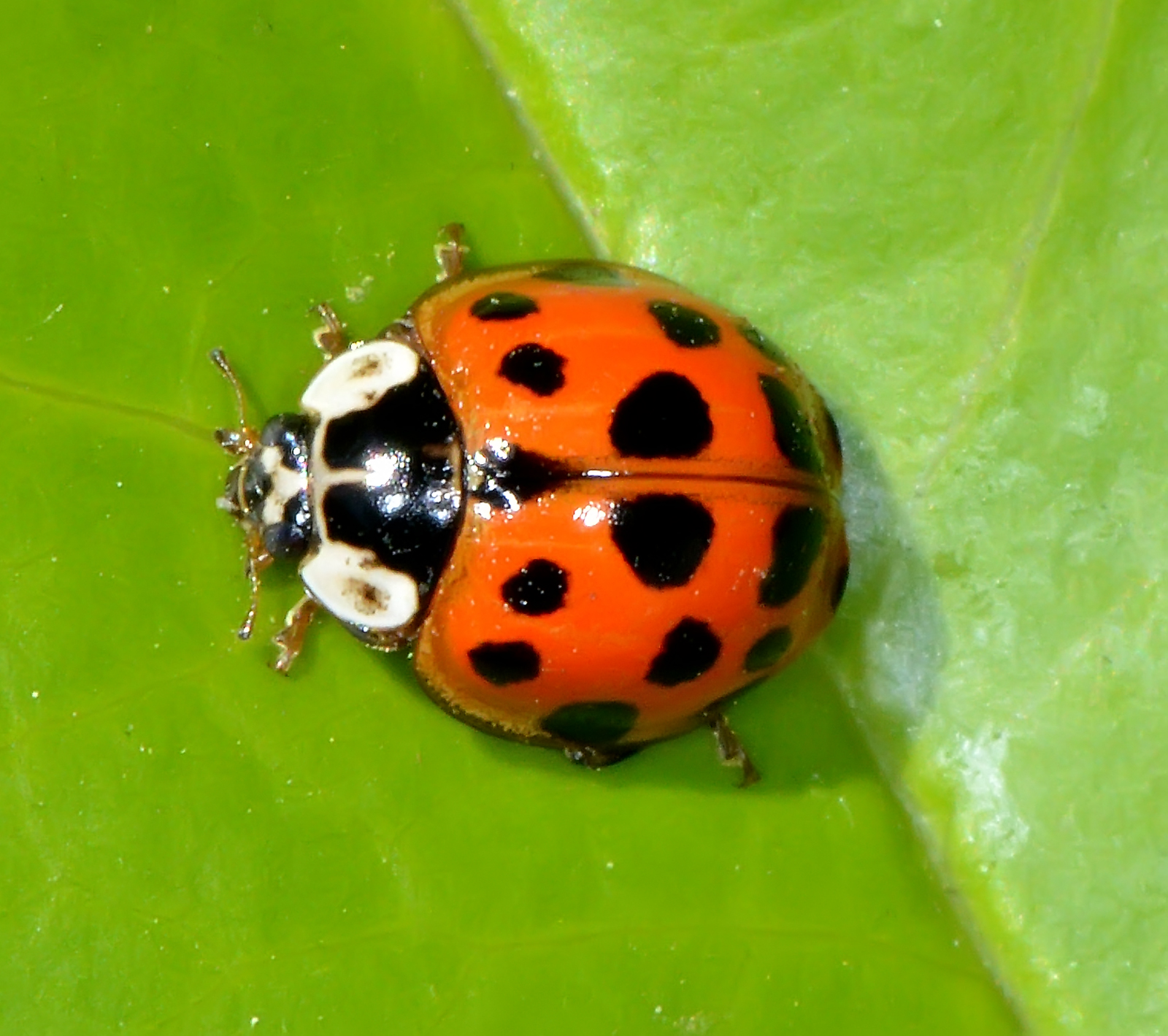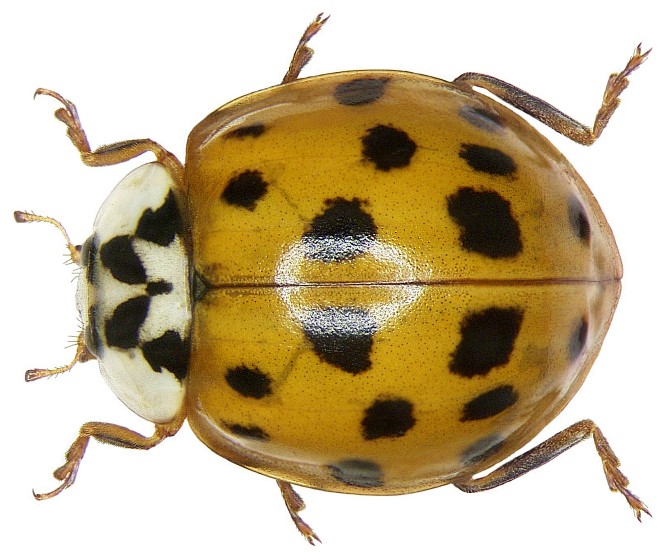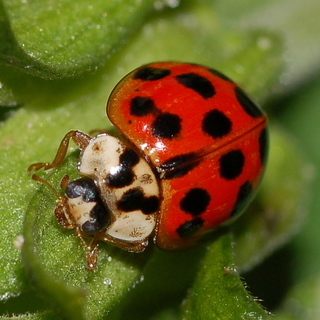Harmonia axyridis
Asian lady beetle ( Harmonia axyridis )
The Asian lady beetle ( Harmonia axyridis ) is a beetle of the family of Ladybug ( Coccinellidae ). He is also referred to as a multi -color ladybug or Harlequin Ladybird. Originally, the type comes from Japan and China and was first introduced at the end of the 20th century in the United States and then to Europe for biological pest control. Meanwhile, he enters in many places en masse wild on, and it is feared that it displaces native ladybird species and other species. It can be homeowners annoying, as it forms large flocks in the fall, winter visit to the houses and other protected places.
Features
The beetles reach a body length of six to eight millimeters, and are five to seven millimeters wide. They have an extremely variable coloration. The color of the elytra varies from light yellow and dark red, it can be the black spots, of which the beetles usually have 19, be so pronounced that it appears as if a black beetle carries example, red dots. The black dots can also be weak or completely absent. The pronotum is light yellowish and is centered by a black "M" - characterized or " W" -shaped drawing. This feature may be so pronounced that the entire middle part of the pronotum is black and only the pages are brightly colored.
The larvae have a black to blue- gray ground color and carry the whole body more or less long, provided with two or three branches bristles ( Scoli ). The abdomen is colored orange on the first five segments on either side of the back, together with the bristles located there. In addition, located on the fourth and fifth abdominal segment closer to the back of each on either side of a more orange colored bristle. Very young larvae are initially colored green and have black bristles, later, the body color is dark and the orange regions form itself.
The Asian lady beetle is less prone to diseases as a Central European species; first, by the number and diversity of peptides to fight infection, and secondly by one antimicrobial substance called Harmonin. In addition, its hemolymph contains small spores of a parasitic protozoan. These so-called microsporidia invade the cells of their host and multiply there. Other ladybug eating the larvae or eggs of a beetle infested, they can also become infected with microsporidia. The result of parasitic infestation are serious illnesses or even death - but only for the domestic ladybug species. In contrast, for reasons still unknown, the parasite appears in the Asian ladybug to be inactive and not to harm him, although this is to be found in all stages and even in the eggs. Because of their resistance to disease and with the help of the microsporidia, which they use as it as a biological weapon, the invasive beetle from East Asia provide a significant selective advantage, so that they are able to displace the native ladybird species more and more.
Dissemination
Europe
The first free- living specimen of the Asian ladybug in Europe was found in 2001 in Belgium. Since then, the species has spread rapidly. Since 2002, he is partially sighted in masses in West Germany and since 2004 he is found in parts of France and southern Britain. The exact distribution limits are unknown, but the beetle seems now in Germany occur. In Switzerland he has also been spreading. The first free- living specimen was found there in 2004 in Basel. Since then, the species has spread massively. In 2006, eleven cantons were affected and there were first autumnal swarm formations sighted. Just one year later the type was practically in the whole of Switzerland and made in the fall collections with several hundred copies.
America
He has already been used for pest control in the early 20th century in the United States, the populations but not established themselves. This was achieved only after a renewed attempt by the introduction in the early 1980s. But a nuisance, he was only towards the end of the century. He lives just like other ladybug species a variety of habitats in which there are aphids, but seems to be particularly common in nearby cities.
Life and development
The Asian ladybug eats large quantities of aphids. It can destroy a day 100 to 270 aphids. However, he does not despise other soft-shelled insects, insect eggs and larvae. Ladybug multiply and do not feed during the winter. As such, they provide for building no danger dar. Natural enemies he has a few, as it most ladybug species its yellow, bitter tasting and toxic hemolymph can secrete as at risk by reflex bleeding.
The female lays its eggs on infested plants by aphids. From this hatch after three to five days, the larvae need two weeks to develop. During this time, a single larva eat up to 1,200 aphids. After the larva has pupated on a sheet, pass five or six days until the imago emerges.
Axyridis and wine
A particular problem is the ladybug to the wine industry dar. straight to vintage time spend the night in the ladybug from the weather relatively protected area of the grapes. Get the ladybugs during the vintage with the processing of the grapes, their hemolymph goes into the mash or must with. This can lead to significant losses in terms of wine quality. The wines are ", peppers, peanut butter, asparagus bitter" characterized in sensor with descriptions like. As the main odor component that comes from the hemolymph of the ladybug, could become the substance 2 -isopropyl -3- methoxy pyrazine (IPMP ) are identified.










